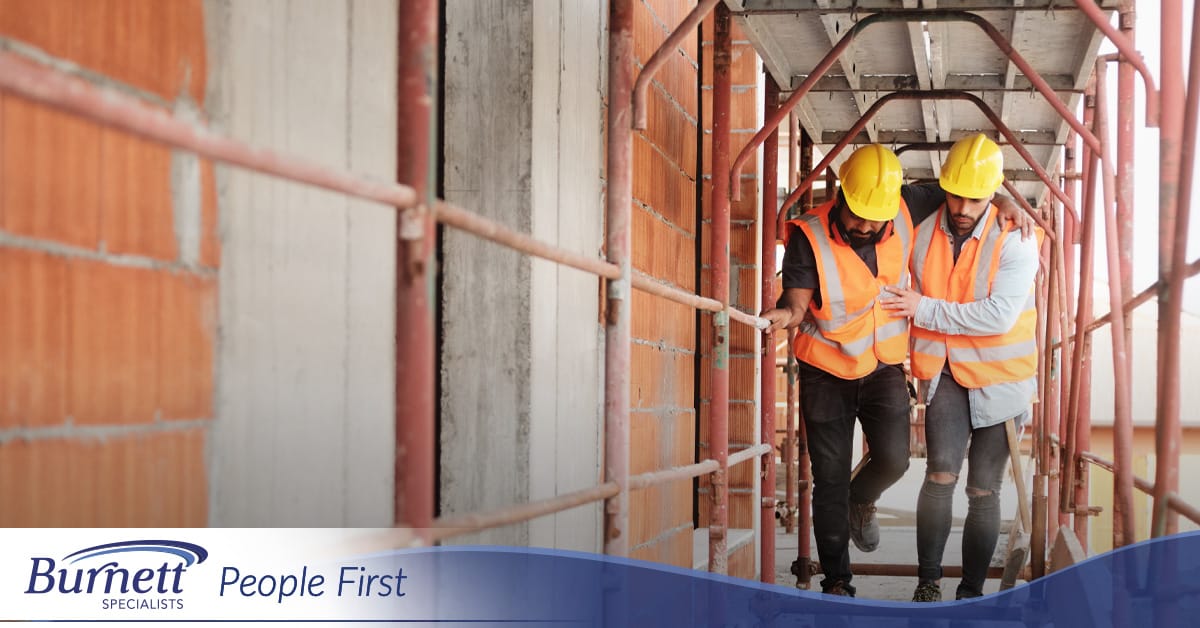Workplace safety isn’t just critical in industrial environments; it’s vital in office settings, too. As a result, there are certain safety best practices that every company should embrace, allowing them to secure the well-being of their workforce and prevent workplace injuries.
In many cases, highly effective safety processes and strategies are relatively easy to implement. If you’re looking to keep your team safe, here are some workplace safety tips that apply to any industry.
Promote Situational Awareness
Being aware of one’s surroundings is critical for maintaining a safe workplace. Through situational awareness, team members can adapt their approaches based on shifting conditions. It ensures they’re noting any potential hazards or circumstances that could increase risk, either to themselves or others.
Ideally, employers want to promote the need for situational awareness. Encourage team members to take a moment to observe their environment before taking on potentially dangerous tasks. Additionally, make sure they no to listen to their surroundings when they’re focusing on an activity, allowing them to take advantage of sound cues that could signal a change in their environment.
Train and Support Proper Ergonomics
Many strains and sprains are simply the result of poor ergonomics. The same can be true for certain repetitive use injuries, including those involving large motions or fine motor skills.
Maintaining good posture does help reduce the odds of workplace injuries. Since that’s the case, employers should train their workforce in the correct techniques for various responsibilities. That ensures everyone knows how to accomplish tasks safely.
Additionally, employers should invest in workstations, tools, and equipment that allow for better ergonomics. For example, supportive, adjustable chairs, height-adjustable monitors, and similar times can make correct posture easier to maintain. By making the right tools available, employees won’t have to improvise, decreasing the odds of them having to use unconventional movements or positions to handle their work.
Train for Correct Equipment Use
In a similar vein, training employees to use the equipment correctly also results in a safer work environment. When a machine isn’t operated as the manufacturer intended, it could create a scenario that harms a worker. For instance, equipment may jam or malfunction, or items being run through the machine may act in an unexpected manner. Additionally, taking shortcuts when using specific machinery – such as pinning back guards to speed up a task – make the workplace more hazardous.
Any employee who may need to use a piece of equipment should have to complete training related to the device. That ensures they understand what proper operation involves, as well as company expectations regarding the processes used.
Make Sure Employees Take Breaks
When your team is fatigued, their focus diminishes. Additionally, their physical capacity might decline. In either case, their odds of injury can go up.
Ideally, employers want to reduce the impact of fatigue by ensuring employees take their scheduled breaks and lunches. This gives them a chance to recharge, making it easier to remain focused upon their return and giving them critical energy for physical tasks.
Ensure Hydration Is Easy to Manage
The side effects of dehydration can range from slight annoyances to serious health consequences. Since that’s the case, it’s wise for employers to make sure that water is readily available to all employees. Whether that’s installing water fountains, using water dispensers in breakrooms, or providing bottled water isn’t as relevant as ensuring a source of drinkable water is available.
In workplaces where bringing water to workstations isn’t permitted, consider adding a policy for quick water-related breaks. That ensures employees can rehydrate when the need arises.
Have a Strict Maintenance Schedule
Equipment maintenance can prevent potentially dangerous conditions created by unexpected equipment breakdowns, malfunctions, or failures. For any machinery – including office equipment – create a strict maintenance schedule.
Along with frequent condition checks to allow for spontaneous as-needed service, follow the manufacturer’s guidelines regarding regular maintenance requirements. Additionally, have well-developed lockout/tagout processes for machinery that needs work, ensuring employees don’t use it when maintenance is due or a problem is being addressed.
Make Reporting Issues Simple
By having a streamlined process for reporting safety issues, team members can play a bigger role in keeping their workplace safe. Often, you want to begin by identifying approved points of contact beyond managers. For example, you may want to form a safety committee, giving employees peers they can speak with about concerns. That broadens who they can talk to, ensuring an option is available if their manager isn’t.
Additionally, consider having a place where employees can make safety suggestions. That could include a designated email address or voicemail box, allowing them to quickly share ideas if something comes to mind.
Practice Emergency Evacuations
Just as schools conduct fire drills, workplaces should practice emergency evacuations. That helps make safely leaving the building during an unexpected event become automatic, increasing the odds that everyone will respond correctly to alerts and follow the right procedure to reach safety.
Along with planned drills, consider having the occasional spontaneous one. While it should be a rare event, it allows companies to identify potential issues in the current process or training approaches, creating opportunities to adjust procedures to enhance safety.
Make Cleanliness a Priority
Proper cleaning can actually increase safety. Dust, debris, standing water, or objects sitting in walkways can all increase the risk of slips, trips, and falls, leading causes of workplace injuries. Plus, it allows you to improve air quality, which has health benefits.
Develop a formal cleaning routine for your workplace, ensuring surfaces, floors, and items are cleaned regularly. Additionally, have processes in place for specific needs, such as increased risks associated with inclement weather.
Find Safety-Conscious Candidates Fast by Working with Burnett Specialists
Safety isn’t just about processes and policies. You also need a safety-conscious workforce, ensuring everyone is doing their part to improve safety throughout the workplace. If you need capable, safety-conscious candidates fast, working with a recruitment agency like Burnett Specialists can be your ticket to success. Request more information to see how working with Burnett Specialists can benefit your organization.










